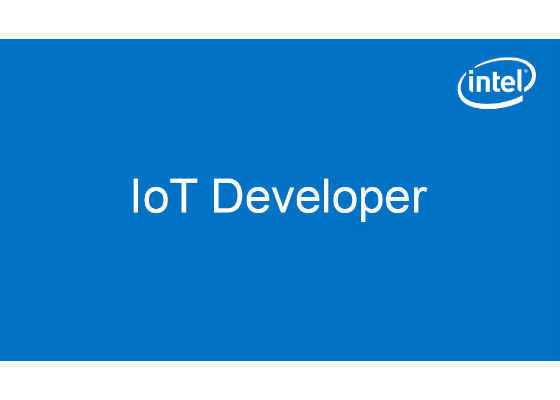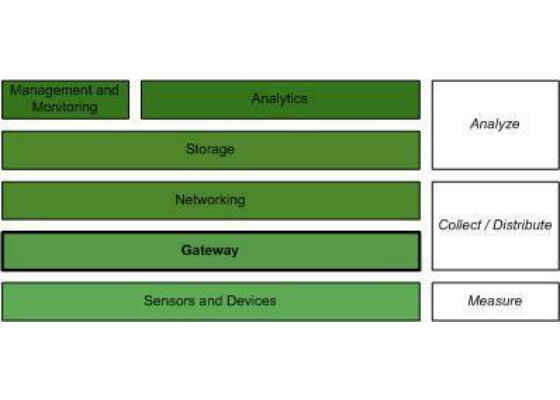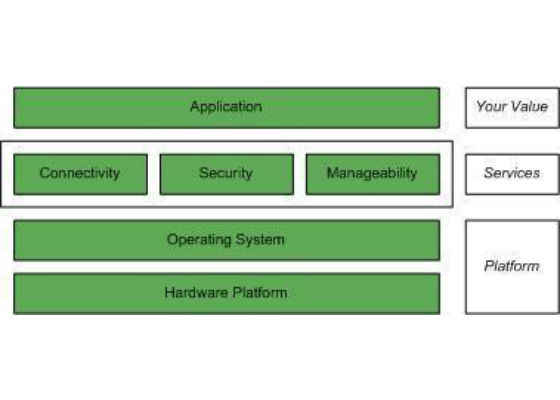What Is the Gateway and Why Should I Care?

An Internet of Things (IoT) gateway is an integral part of an IoT ecosystem, handling communication with local sensors and remote users among a suite of other functions. In this article you’ll explore the idea of the IoT gateway and how it can benefit your IoT application. You’ll also learn about the Intel®IoT Gateway Technology and how it meets this need.
An IoT ecosystem is made up of many components, or layers. The bottom layer contains the sensors and devices used to measure the world and effect changes. The gateway acts as a secure intermediary between these sensors and devices and the cloud (through networking and eventually persistence in a storage system). The top layer handles overall monitoring and management of the IoT ecosystem, with analytics of the collected and persisted data, including applications and the value the IoT ecosystem exposes (Figure 1).
Figure 1. Canonical Internet of Things Ecosystem Expressed Through Layers
The gateway of this ecosystem is not necessarily a singular component but rather a network of gateways that attach to all the remote devices, scaling with your device population. The gateway to your IoT sensors and devices is particularly important when new capabilities, such as security and manageability, enter the ecosystem. Let’s focus on the IoT gateway and explore its use, capabilities, and key benefits in your IoT solution.
What Is a Gateway?
An IoT gateway is an intermediate device between sensors and devices and the applications that create value from their data and access. The gateway allows you to efficiently collect and securely transport data from devices, remote users, and applications to serve a particular need. This is a gateway’s core capability, but it’s only one aspect that you’ll find important as a developer.
IoT Gateway Stack
IoT gateways consist of a hardware platform and an operating system and expose a rich set of services for your IoT application. What makes an IoT gateway important is the additional capabilities and focused set of services that provide benefits for IoT markets (Figure 2).
An example of an IoT Gateway is the Intel® IoT Gateway Technology platform, which includes these capabilities and more.
Figure 2. Internet of Things Gateway Stack in a Nutshell
Above the operating system is a services layer that exposes key gateway features for the IoT application:
- Connectivity provided by a variety of interfaces (such as 3G cellular, Bluetooth*, USB, serial, ZigBee*, and Wi-Fi) and protocols (such as virtual private networks [VPNs] and Message Queuing Telemetry Transport [MQTT])
- Security features not only to protect the device against exploits but also to guard the data as it moves between the device and remote locations
- Manageability features for configuration, monitoring, and firmware updates
These three features are a key difference between an IoT gateway and a traditional embedded platform. The targeted protocols, interfaces, and firmware features for security and manageability create a new class of device that is optimal for IoT applications.
Another differentiator is operating system support. Intel® IoT Gateway Technology supports Wind River* Linux*, a secure and reliable platform that is fully integrated with connectivity, security, and manageability features.
Finally, at the top of the stack is your IoT application. This is your value-added element and what differentiates you and your market. This application gathers data from local devices and sensors as well as control aspects in the environment.
Now that you understand IoT gateways, let’s look at some scenarios for and benefits of an IoT gateway and the advantages it brings to you and your application.
How Do You Use a Gateway?
Consider the example of an automotive fleet monitoring application. In this environment, you would use an IoT gateway to provide three core features. The first feature is access to the vehicle’s internal network (such as a controller-area network [CAN] or onboard diagnostics 2), which provide information about the vehicle (for example, velocity, engine RPM) and access to a global positioning system device (using a serial interface). The second function is a compute platform to process or reduce this data and respond to requests from an external application. The final feature is communication with the remote location through cellular services (2G, 3G, or 4G). The IoT gateway provides all the capabilities you need to develop this fleet-monitoring application.
In an agricultural application, an IoT Gateway would provide three core features here, as well. The first feature accesses various sensors around the farm (using ZigBee*) to collect information about water usage and current flow state. The second feature is a compute platform to process this data into a temporal log. The third feature is communication with an agricultural application over Wi-Fi, which uses the data and weather information to optimize water use. The IoT gateway provides each capability, resulting in IoT agriculture.
In both examples above, Intel® IoT Gateway Technology provides the requisite interfaces and protocols to meet the demands of the application. But a key advantage is that the Intel® IoT Gateway Technology platform not only meets these requirements, but does so in a secure and manageable way.
Why Should I Care?
There are many benefits to using an IoT gateway like the Intel® IoT Gateway for your IoT application, including:
- You get an integrated, prevalidated platform that allows quick prototyping and fast development and deployment of your gateway solution.
- The gateway provides features to help you deploy a production solution (such as manageability and security features).
- You’ll find the necessary communication hardware and drivers to enable connectivity for your application quickly, including ZigBee*; cellular 2G, 3G, and 4G; Bluetooth*; serial (RS-232, RS-485); USB; CAN; VPN; Wi-Fi; and MQTT. These capabilities are built into the provided Wind River* Linux* operating system that Intel uses, making them immediately available to your application.
Manageability features include standards-based protocols like Open Mobile Alliance Device Management, Technical Report 069 (an application-layer protocol for remote device management), and other web-based configuration interfaces. Security features include OpenSSL, encrypted storage, VPN, secure boot, and the McAfee® Application Integrity Monitor and Application Resource Control. The Intel® IoT Gateways are a family of platforms that target your particular application based on your desired processing capability, memory and storage requirements, and input/output requirements.
Summary
The IoT gateway is a critical piece of the IoT ecosystem. It provides the foundation of application development for sensor and device access, onboard processing, and communication to a remote application but in a secure and manageable way. Intel has you covered with an integrated and prevalidated platform that includes configuration options that focus on the industrial, energy, and transportation markets. The Intel® IoT Gateway Technology solutions offer an easy way to get your IoT application up and running in a secure and manageable fashion.
For more such intel IoT resources and tools from Intel, please visit the Intel® Developer Zone
Source: https://software.intel.com/en-us/articles/what-is-the-gateway-and-why-should-i-care






